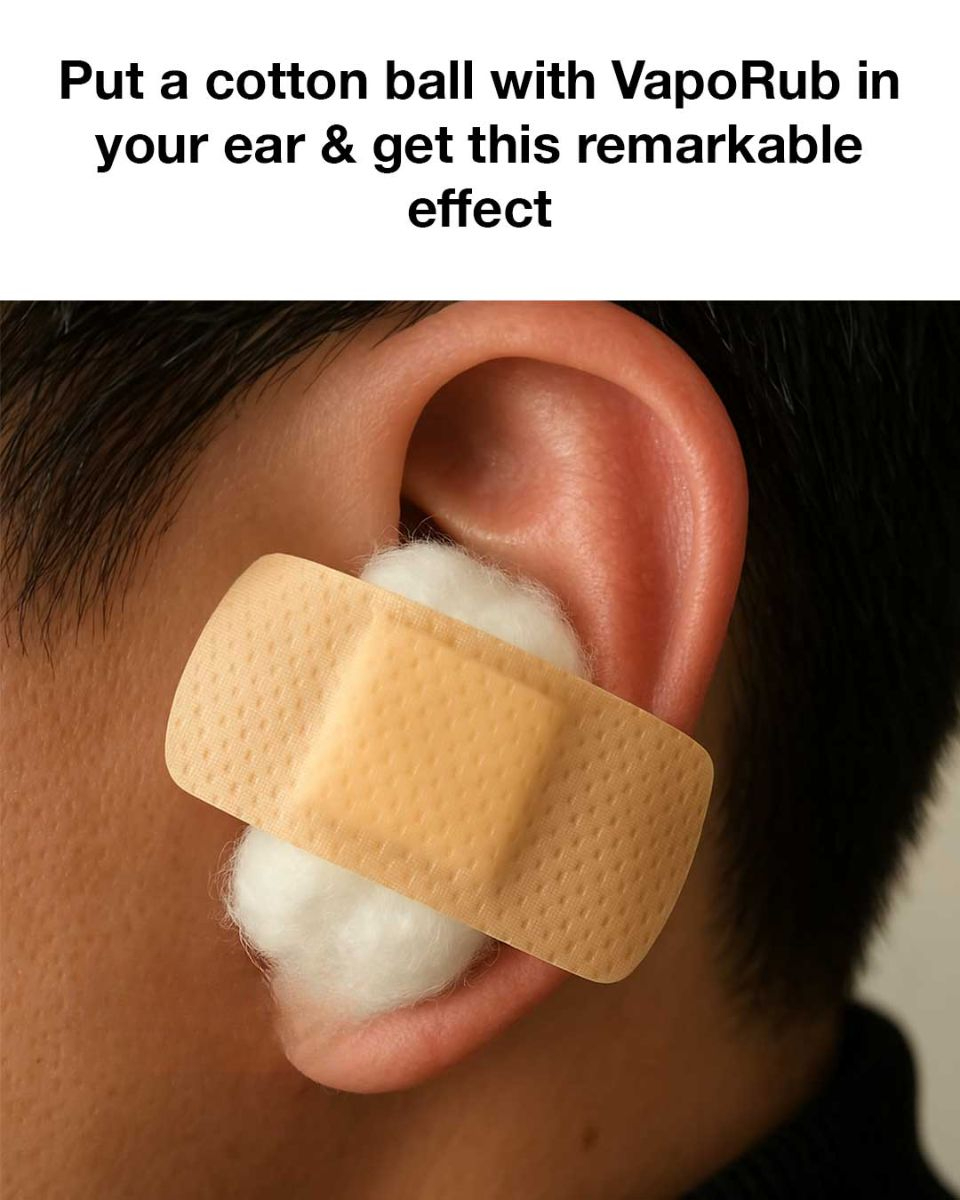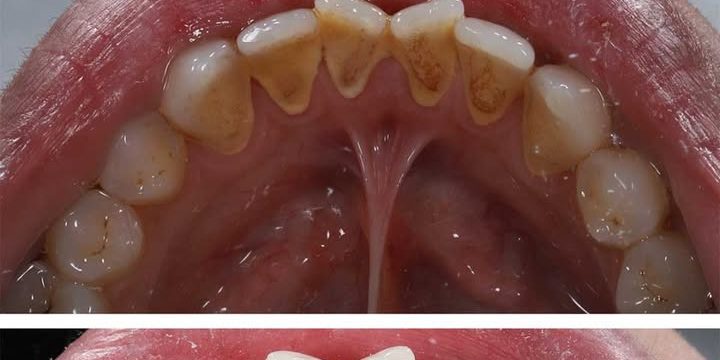Vicks VapoRub has been a trusted product in American households for more than 100 years, best known for easing coughs, chest congestion, and other cold-related discomforts. Traditionally applied to the chest, throat, or back, its soothing menthol scent and warming sensation have brought comfort to generations.

However, some individuals have started exploring less conventional ways to use this classic remedy. One method gaining attention is placing a small amount of VapoRub on a cotton ball and positioning it near the ear. While this isn’t a practice backed by medical professionals or supported by formal clinical studies, many people have shared anecdotal experiences suggesting that it can provide relief from minor earaches or sinus congestion. This alternative use centers around the product’s active ingredients, including camphor, menthol, and eucalyptus oil—each of which contributes to its well-known effects. Camphor provides a cooling effect and acts as a topical analgesic that may reduce pain.
Menthol, derived from peppermint oil, helps open up nasal passages and also delivers a cooling, soothing sensation. Eucalyptus oil is another powerful ingredient known for its anti-inflammatory and decongestant qualities. When combined, these ingredients produce strong vapors that many people find effective in easing discomfort from congestion or sinus pressure, especially when applied near sensitive areas like the ears. To try this method, the process is simple but should be done carefully. Begin by washing your hands thoroughly. Scoop a small amount of VapoRub and gently apply it to a cotton ball—just enough to coat the surface without soaking it.
Then, place the cotton ball lightly at the entrance of your ear canal. Do not push it inside, as this could risk damaging the eardrum or causing an infection. The goal is to let the vapors enter the ear naturally without physical contact. Leave the cotton ball in place for about 15 to 30 minutes. Afterward, discard the cotton ball and wash your hands again. People who’ve used this technique often describe a warming sensation near the ear that feels comforting, particularly during a cold or sinus infection.
Some also report that the menthol vapors help open their nasal passages, indirectly easing pressure that contributes to ear pain. While these accounts are based on personal experiences rather than peer-reviewed research, the consistency in reported relief suggests there may be some value in the approach—at least for short-term comfort. From a scientific standpoint, VapoRub’s ingredients have a solid reputation. Menthol and eucalyptus oil have long been used to relieve nasal congestion and mild muscle aches, and camphor is known to help reduce pain and inflammation when applied topically. While there’s no specific research focused on using VapoRub near the ear, the individual effects of these ingredients are well-documented, making the anecdotal evidence at least plausible. That said, safety should always be the top priority. Never insert anything deep into your ear canal, including a cotton ball, as doing so could lead to damage or infection. This method is not recommended for children, individuals with sensitive skin, or those allergic to any of the product’s components. If you experience increased discomfort, irritation, or any unusual symptoms, stop using it immediately and consult a healthcare provider. Beyond this ear remedy, VapoRub has a variety of alternative uses that many people have tried. Some apply it to the soles of their feet at night to reduce coughing. Others use it to soothe sore muscles or relieve minor joint pain. Rubbing a small amount on the temples is even said to help with headaches. Though these uses are largely anecdotal and not medically verified, they remain popular among people who prefer simple home remedies. In conclusion, while placing a VapoRub-covered cotton ball near the ear is not a medically approved practice, many individuals claim it provides temporary relief from minor discomfort associated with colds and congestion. The combination of warming vapors and aromatic oils can create a calming, soothing effect that helps people feel more comfortable during illness. Still, it’s important to approach this and any home remedy with caution. Always prioritize your health, listen to your body, and seek professional medical advice if symptoms persist or worsen. As with all remedies outside the standard medical playbook, results can vary, and what works for one person might not work for another—but for those looking for comfort during a rough cold, this little trick might just offer a bit of relief.





